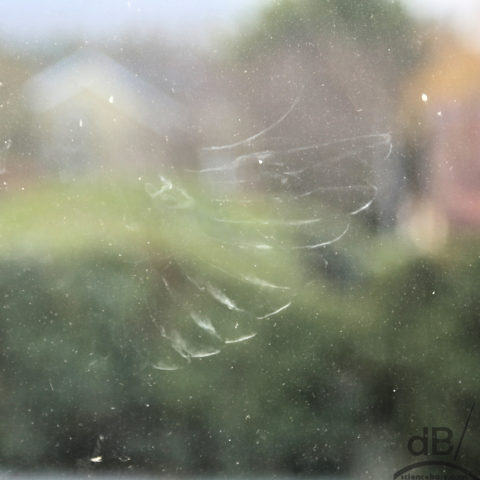Have you ever seen a grey feathery, pigeon-shaped outline on a window? It’s usually left when a bird has somehow not seen the glass and attempted to fly through. If you’re in the room when it happens it can make a surprisingly loud thud but pigeons seem to crash land after the collision, look very stunned, ruffle their feathers and move on, But, what exactly is that grey powder that they leave behind on your window? It’s known as powder down.

Down feathers are fine feathers found under the tougher exterior feathers. Chicks usually have only down feathers until they grow their adult feathers. Powder down, or pulviplumes, is somewhat different and occurs in a few unrelated groups of birds – pigeons, tinamous, herons, and parrots, for instance. In some species, the tips of the pulviplume barbules break up into a fine powdery form of keratin, which forms a “feather dust” among the feathers. In others, powder grains are generated by cells that surround the barbules of growing feathers.
Powder down is a known allergen and is one of the causes of “bird fancier’s lung” and related conditions in people who keep or work with birds, including pigeons, parakeets, cockatiels, budgerigars, parrots, and turtle doves.
The above picture shows the imprint left by a woodpigeon that had slammed into my office window recently, cropped from the photo is the big smudge of powder down left by its body. You might also like to note that our window cleaner has not visited for quite some time.
Several other species produce powder down too, including notoriously, parrots, although you’re less likely to have a Mealy Amazon slam into a back bedroom window in East Anglia than a Wood Pigeon.